Tourists who visit Peru are often attracted by the Inca archaeological heritage, whose most famous jewels, Cuzco and Machu Picchu, are located in the southern half of the country. But the Peruvian north is also attractive from that historical-monumental point of view, apart from being more culturally varied as it has remains of various civilizations such as, among others, the Mochica, the Sicán or the Chimú. One of the most fascinating places that can be visited is attached to the latter:Chan Chan, the largest adobe city in America and the second largest in the world after the Iranian city of Bam, which UNESCO included in its World Heritage list. Humanity in 1986.
The Chimú kingdom emerged in the northern region that today extends from the department of Tumbes to Lima, after the fall of the Huari empire. It was at the end of the first millennium before Christ, lasting approximately four centuries until its conquest by the Incas of Túpac Yupanqui in 1470. In between, it became the richest and most prosperous coastal state in pre-Hispanic Andean America, growing through the annexation of neighboring territories, of which the most significant were the Sicán kingdom of the current department of Lambayeque and the lordship of Chancay.
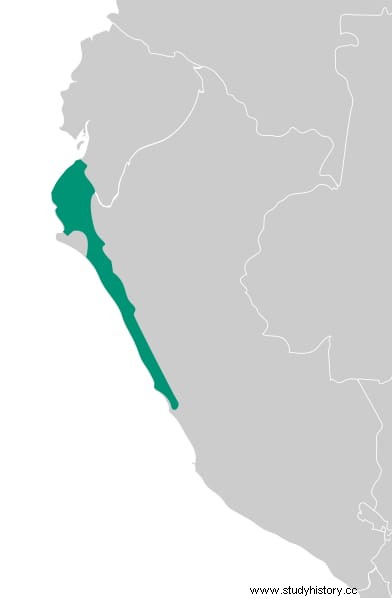
Its capital was in Chan Chan, very close to what is now Trujillo, a confused place of origin, shrouded in myth, as its name shows:it literally means Sol Sol. , although surely the correct translation is Great Sun , alluding to the torrid climate of the area. Another theory says that it derives from the term sian , interpretable as House of the Moon , and a third alludes to some local salt mines. The Spanish referred to it as the City of Chimo and the first reference to the current name is not found until as late as 1791.
In any case, with its 20 square kilometers and a population estimated between 40,000 and 60,000 people, it was the largest adobe city in America. Something remarkable if one takes into account that, according to mythology - collected by the Anonymous Chronicle Spanish in 1604-, its foundation was a matter of Tacanaymo (or Chimor Cápac), a chief of unknown origin who arrived from the other side of the sea at the head of a fleet of rafts and landed on the coast of the Moche Valley, becoming the first ruler under the name of Gran Chimú. A story suspiciously similar to that of the Sicán character Naylamp, who also arrived in Lambayeque commanding a group of reed horses.
In fact, Chan Chan was founded around 850 A.D., probably from some Huari village, using that transatlantic version of adobe called quincha as a construction material:a network of reeds or bamboo covered with mud that supplies the scarcity of rock. typical of the coastal regions (which would remain exclusively for the foundations) and, apart from thermal insulation, it has other virtues such as constituting a good anti-seismic due to its elasticity, its lightness, its capacity to absorb vibrations and its easy reconstruction in case of collapse; All this is fundamental in a continent where earthquakes are frequent.

The walls and ceilings were made with the quincha (protected by interwoven straw), all supported by a wooden framework and decorated with a layer of polychrome stucco and incised reliefs with geometric motifs, although sometimes animal figures are also represented (fundamentally related to water, such as fish and waterfowl, given the importance that both the river and the sea had for the Chimú) and humans, although all the figurative figures present a high level of stylization.
However, the city differed a little from the urban concepts that we use today and its development obeyed a hierarchical criterion, according to which each social stratum occupied a specific area and its architecture reflected its economic condition. The upper classes resided in the center, about six square kilometers in which the so-called citadels stood, a set of ten rectangular complexes corresponding to as many leaders. They were walled (with a single entrance) and oriented north-south, extending over an average area of fourteen hectares each.
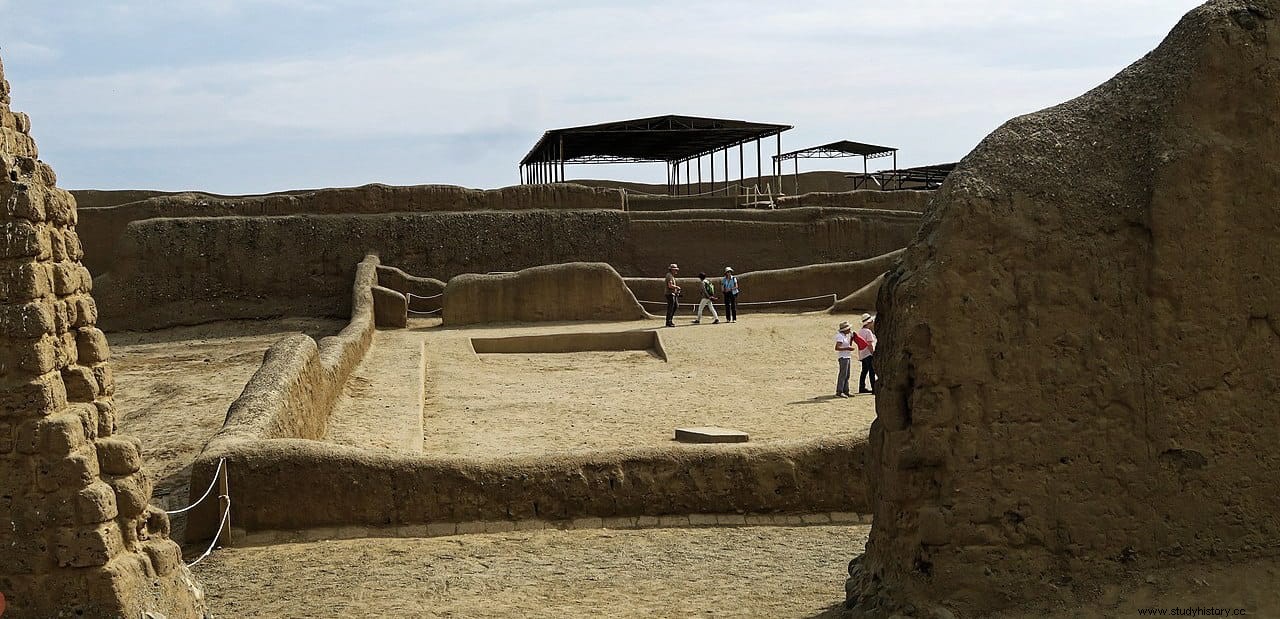
The citadels included squares, warehouses, wells, ceremonial rooms, pyramidal funerary constructions and, attached to the outside, the palaces. Most have been baptized with the names of their discoverers and researchers:Squier, Gran Chimú, Bandelier, Uhle, Chayhuac, Rivero, Laberinto, Tello, Velarde and Nik An (formerly Tschudi, the only one that can be visited at the moment as the others are in excavation process).
This system had its reason for being, at least since the period of Chimú expansion. It was based on the fact that each ruler only inherited the position of his predecessor, not his properties, which were administered by his descendants. Therefore, the new president had to forge his own heritage with the product of his conquests and build his particular citadel, where he lived with his family and would bequeath it to them when he died, repeating that cycle over and over again. once.
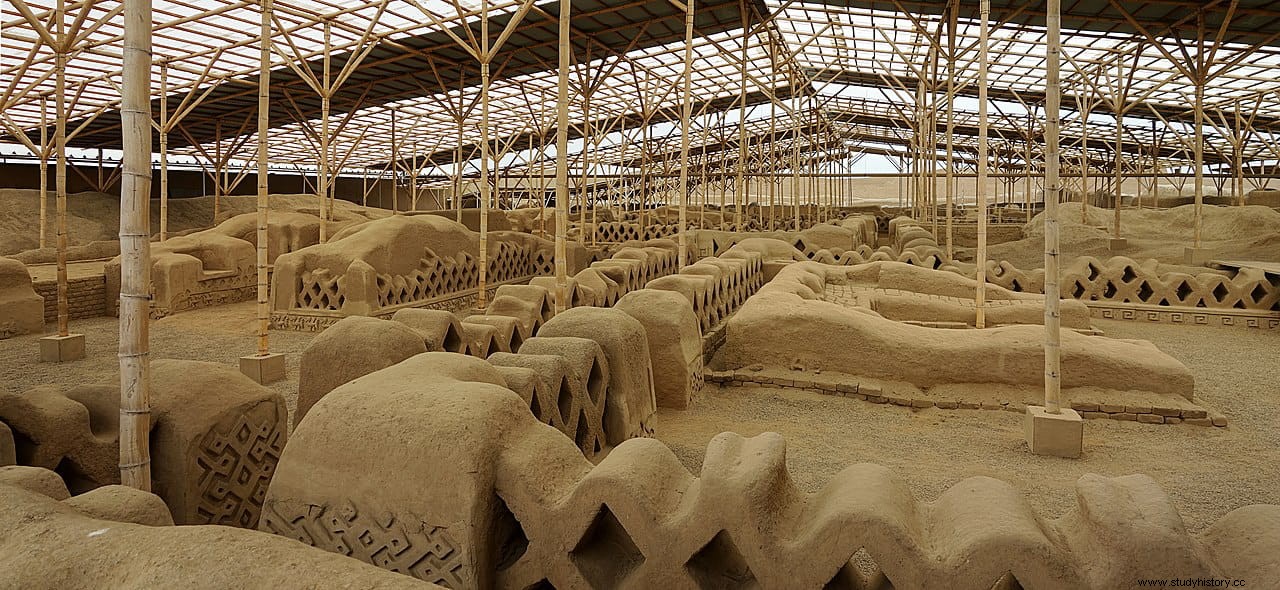
On the other hand, the lower classes - which would add up to ninety percent of the population - lived in the southern part, a kind of marginal neighborhood where small houses of poor architectural quality were located, irregularly and crowded one on top of the other. They were only used as homes but also as craft workshops. The northern part was occupied by a large public forum and the audiences, U-shaped rooms dedicated to public administration.
In short, Chan Chan was the residential center for leaders and artisans, to which was added a series of satellite peasant nuclei that dotted the banks of the Moche River and were the ones that supplied agricultural products to the capital. This also received water thanks to a system of canals, protected from time to time by small bastions, which allowed the crops to be irrigated and fed the hundred and a half wells that were in the city, most of them located in the citadels, in the hands of the accommodated classes.
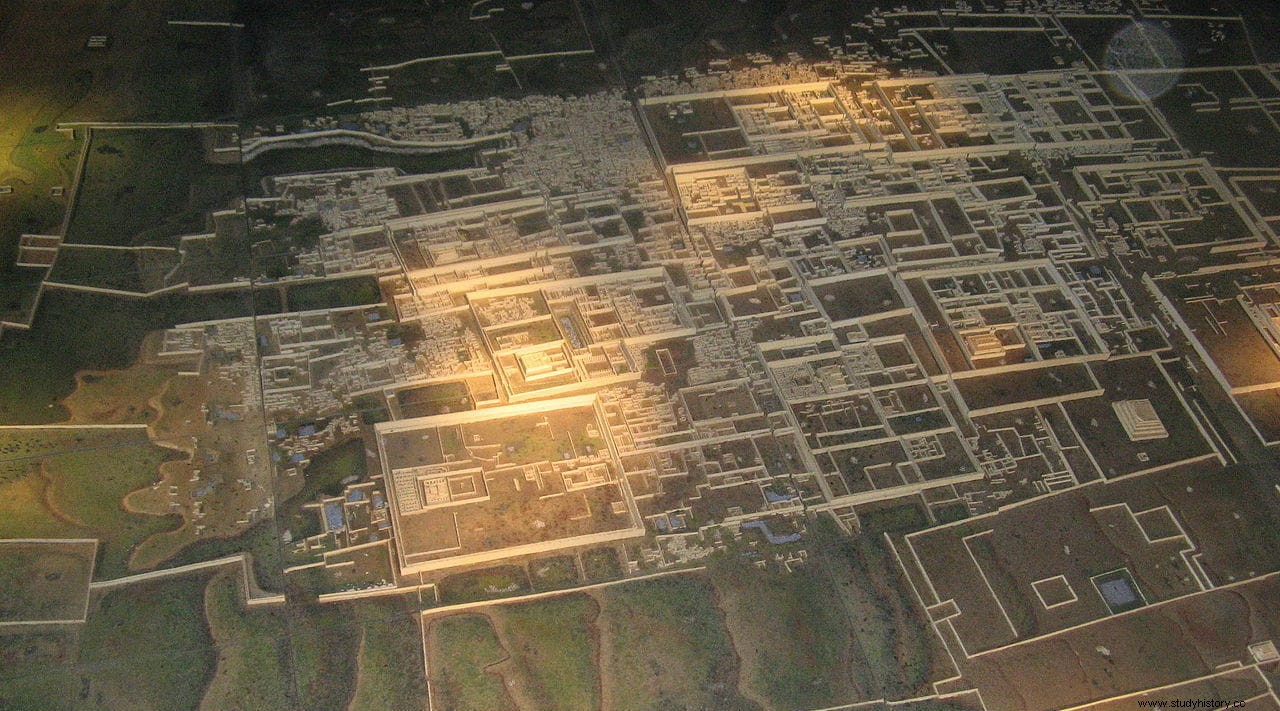
Chan Chan's growth process is usually divided into three phases. The first would go from its foundation until the year 1100, being in it when the simplest citadels were built, those of Chayhuac and Uhle. During the second, from 1125 to 1370, Labyrinth was erected, whose tripartite division system served as a model for the following ones, and Gran Chimú, the largest. The third covers from that last year to the Inca conquest in 1470 and is characterized by a reduction in the size of the citadels, as a result of the decrease in taxes -despite the increase in officials- and the consequent economic crisis.
The Spaniards did not arrive there until 1534 and by then the city was abandoned, since its population had been drastically reduced when, during the siege to which Tupac Yupanqui subjected it, the aqueducts that supplied it with water were destroyed and then, in 1500, Huayna Cápac razed much of it to put down a rebellion. The local caciques joined the conquerors against Atahualpa and collaborated in the search of the ruins, in search of possible riches buried under the huacas; that scenario would not change with the independence of Peru.
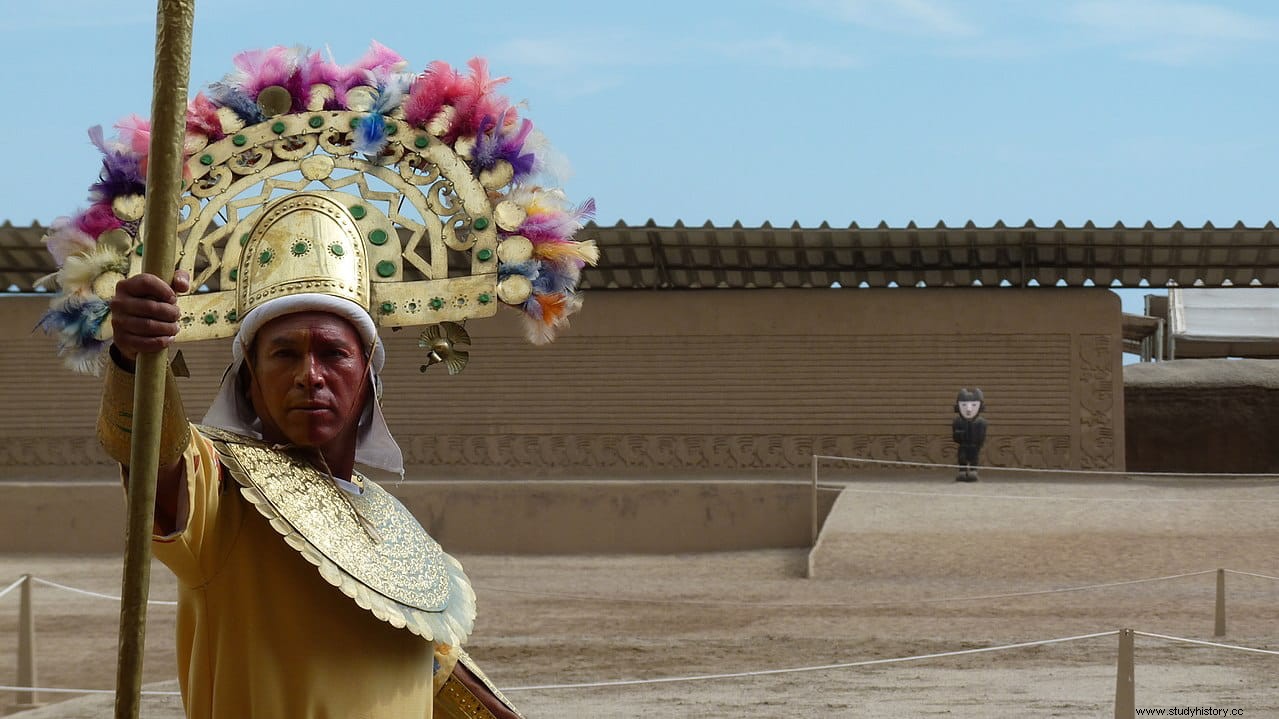
Today, despite the measures adopted for its protection, Chan Chan is still in danger from treasure hunters and the flimsiness of its materials in the face of erosion (rains, winds, floods) that tends to increase due to the effect of climate change. and by the cyclical action of El Niño, the natural phenomenon that centuries ago contributed to the fall of the Sicán at the hands of the Chimú; ironies of fate.
